Ultimate IT Risk Management Guide 2024: Best Practices, Strategies, and Tools
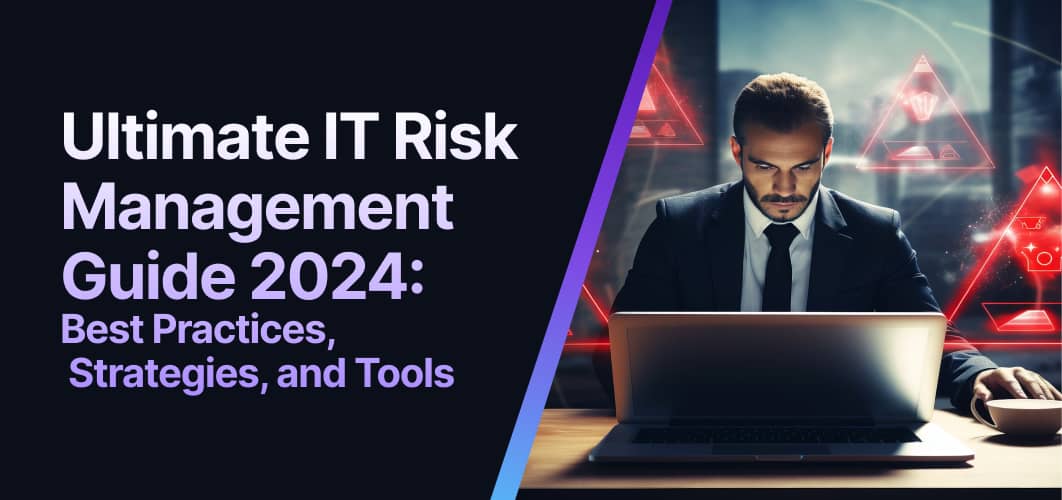
IT Risk Management involves managing cybersecurity risks through systems, policies, and technology. It is crucial because it helps minimize the impact of data breaches, leading to significant cost savings for businesses. However, it faces challenges due to evolving cybersecurity threats.
At Easy2Patch, we created this post to help organizations protect their sensitive data and intellectual property through effective IT risk management. By the end of this article, you will understand all the stages and best practices of this process.
Now, to make sure that your IT risk management efforts are comprehensive, understanding IT risk management is a foundational step before exploring the stages and best practices.
Understanding IT Risk Management and its Importance
Did you know companies good at managing IT risks are more likely to make stakeholders confident and succeed in business? Why? Because IT Risk Management is a systematic process for identifying, evaluating, and addressing potential threats to your organization's IT systems. Without a solid IT risk management plan, your organization leaves its doors wide open to tech disasters. Such vulnerability can cast a shadow over the organization's prospects.
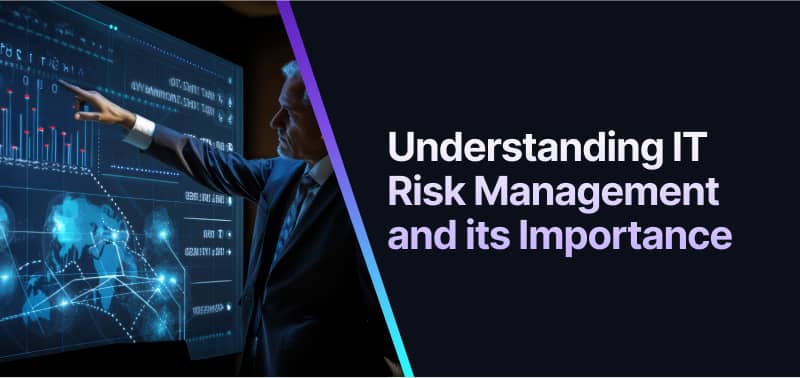
IT Risk Management involves several stages and components. The main goal is to identify, assess, address, and analyze IT-related risks that could impact the business. The stages include IT Risk Identification, IT Risk Assessment, IT Risk Mitigation, and IT Risk Monitoring. What happens next? It's all about resolution! However, at this stage, we must thoroughly examine each one.
Identifying IT Risks
Here, we are at the initial stage of the IT risk management process. It also sets the foundation for subsequent stages of risk management. These risks can be broadly categorized into several types. Let's explore their characteristics and potential impacts on organizations:
Software Risks: These involve issues with software development and deployment, such as bugs, security flaws, and compatibility problems. These risks can cause system failures, data breaches, and operational hiccups.
Hardware Risks: These relate to physical IT components like servers, workstations, and networking gear. Malfunctions can lead to data loss, downtime, and reduced operational capacity.
Technology Obsolescence Risks: Using outdated technology can lead to breaches, system crashes, and frequent downtimes because it is no longer supported.
Cybersecurity Risks: These include threats like hacking, malware, ransomware, and phishing. Such risks can compromise data, disrupt operations, and harm an organization's reputation.
Here is a table of some IT cyber threats for you. These days, we can't neglect their importance and effects. Familiarity with common threats also allows for quicker identification and response to incidents.
| Threat Type | Description | Question |
|---|---|---|
| Malware | Malicious software can steal data, launch ransomware attacks, create backdoors, and cause other types of damage. | Is your system protected against malware? |
| Social Engineering and Phishing | Attackers trick users into giving up credentials or data through fake communications. | Can your employees spot a phishing attempt? |
| Distributed Denial of Service (DDoS) | Overwhelming a service with requests can make it stop working, leading to significant costs. | Is your network secure against DDoS attacks? |
| Man-in-the-Middle Attack (MitM) | Attackers intercept and hijack communications between users and their target. | How secure are your communications? |
| Password Attacks | Compromising passwords through various methods can impact an organization significantly. | Are your passwords strong enough? |
Project Management/ Human Risks: Poor planning, inadequate resources, and scope creep in tech projects can cause delays, cost overruns, and unmet goals.
IT Compliance and Regulatory Risks: Not following industry regulations can result in legal penalties, fines, and damage to reputation.
Risk Identification Techniques
In this section, let us briefly give you some tips on Risk identification:
- Root Cause Analysis: What’s causing the issue? Find the underlying causes of risks to develop effective strategies.
- SWOT Analysis: Identify Strengths, Weaknesses, Opportunities, and Threats related to a project or organization.
- Expert Judgment: Consult with experienced individuals to identify risks. Who has the expertise?
- Checklists (Risk Categories): What’s on your checklist? Use lists of common risks to identify specific ones in a project or organization.
- Document Analysis: Review project documents to spot potential risks. What does the documentation reveal?
- Assumptions Analysis: Are your assumptions correct? Identify and analyze assumptions made during planning and execution.
Assessing IT Risks
We have progressed to the second phase of IT risk management. Assessing IT risks focuses on identifying, evaluating, and prioritizing risks to an organization's information systems. This stage involves using frameworks, selecting assessment methods, and implementing patch management strategies.
Organizations use various risk assessment frameworks to manage IT risks:
- NIST Risk Management Framework (RMF): NIST's RMF is a seven-step process to manage security and privacy risks. Steps include Prepare, Categorize, Select, Implement, Assess, Authorize, and Monitor. It links to NIST standards and guidelines, providing a repeatable approach to risk management.
- ISO 27001/27002: ISO provides best practices for the Information Security Management System (ISMS). ISO 27001 helps identify and manage security risks, while ISO 27002 offers guidelines for security controls. It's IT-focused, aiding in improving security infrastructure.
- COBIT: Created by ISACA, COBIT offers a framework for IT governance and management. It helps develop, implement, monitor, and enhance IT governance structures, aligning IT with business goals and managing risks.
Quantitative vs. Qualitative Assessment
To understand which method suits your organization's needs and data availability, you should know the difference between these two methods.
Quantitative Risk Assessment uses mathematical models and simulations to assign numerical values to risks. It provides objective data about the potential impact and likelihood of risks. More precise but requires extensive data and can be complex.
Qualitative Risk Assessment relies on subjective judgment to evaluate risks. It's scenario-based, involving expert opinions and experiences. Quicker and easier to understand but may lack detail and precision.
Importance of Patch Management and Third-Party Patching
Do you regularly update your third-party applications? Vulnerabilities in third-party apps are major targets for cyberattacks. Keeping them current is vital for security! Effective patch management can protect you from vulnerabilities and keep everything running smoothly. It simply includes patching internal systems and third-party apps.
The good news is that Easy2Patch simplifies this process, offering a reliable solution for all your third-party patch management needs.
Mitigating IT Risks
We are now entering the third phase of IT risk management. Risk mitigation doesn't aim to eliminate threats entirely but to manage and reduce their impact on business continuity. Data breaches are indeed becoming more costly. New technologies are emerging, and cybercrimes are increasing. Mitigating these risks is an essential step in IT risk management after the first two. Let's explore effective strategies and tools for reducing IT threats:
Security Controls: Are your software and antivirus programs up-to-date? Installing the latest patches helps defend against vulnerabilities. Additionally, security measures like firewalls, data encryption, and Multi-Factor Authentication (MFA) protect systems from unauthorized access.
Incident Response Plans: Are you prepared for a security breach? Incident response plans help you design effective steps to take during a security incident.
Regular Training for Staff: Did you know employees are the first line of defense against cyber threats? Regular training helps staff understand risks and how to avoid them.
Technology and Tools in Risk Mitigation
- Firewalls: Do you have a firewall protecting your network? Firewalls control incoming and outgoing network traffic. They prevent unauthorized access.
- Intrusion Detection Systems (IDS): How do you detect intrusions in your systems? IDS monitors networks for malicious activity or policy violations. They alert administrators to potential threats, enabling quick action to prevent damage.
- Encryption: How secure is your sensitive information? Encryption converts information into a secret code, protecting data confidentiality.
- Artificial Intelligence (AI) and Machine Learning: These technologies analyze large amounts of data to identify patterns and predict risks. AI, as a proactive measure, can detect threats before they occur.
- Real-Time Monitoring: Are you monitoring your network in real time to prevent minor issues from becoming major incidents? Continuous monitoring of systems helps detect and respond to threats swiftly.
Monitoring and Reviewing IT Risks
We are advancing to the final phase of IT risk management. Monitoring and Reviewing IT Risks is a continuous process. This stage maintains the security and integrity of an organization's IT infrastructure. It also ensures that the implemented risk management strategies remain effective and adapt to new threats and changes in the business environment. It has two key parts that we will explore here:
Continuous Monitoring
- Ongoing Awareness: How can you make risk-based decisions quickly? Ongoing Awareness keeps you aware of information security, vulnerabilities, and threats. Consequently, it helps you to make effective decisions at the right time.
- Assessment of Security Controls: Are the security controls doing their job to mitigate risks? Continuous Monitoring checks how well all security controls work.
- Supports Risk Management Decisions: How can you keep the risks at acceptable levels? By constantly monitoring the IT environment to help organizations make informed risk management decisions.
- Updates Security Plans: Are your plans up-to-date with the current threats? Continuous monitoring helps update security and privacy measures.
- Detects Unexpected Changes: Did you know that just planning and implementing security measures doesn't guarantee systems stay as configured? This is where continuous monitoring steps in and spots unexpected changes in your systems.
- Addresses Shifting Business Environment: How can you adapt to the constant Business Environment changes? The business environment changes fast. Annual assessments or audits aren’t enough. Continuous Monitoring ensures that security controls remain effective in this dynamic context.
Regular Reviews and Audits
Regular reviews and audits are crucial for maintaining IT security. Here's how they help:
- Identifying Vulnerabilities and Risks: How proactive is your organization in identifying risks? Regular audits help find vulnerabilities in IT systems before cybercriminals do.
- Ensuring Compliance with Regulations: Audits are key for regulatory compliance, like GDPR, HIPAA, or PCI-DSS. Compliance avoids legal penalties and builds trust.
- Enhancing Security Measures and Protocols: Are your current protocols up to the task? Audits reveal existing vulnerabilities and test the effectiveness of security measures.
- Building Trust with Clients and Stakeholders: Do they know you are committed to protecting digital assets? Regular audits build trust with clients and stakeholders.
- Optimizing IT Performance: Is your IT infrastructure performing at its best? Security assessments often uncover inefficiencies. Optimizing these can improve IT performance and operational efficiency.
Now, we are all set to move from understanding the IT risk management stages to implementing best practices. Let's find out.
Best Practices and Industry Standards for IT Risk Management
Following best practices helps identify and handle risks effectively. Here are key IT risk management best practices:
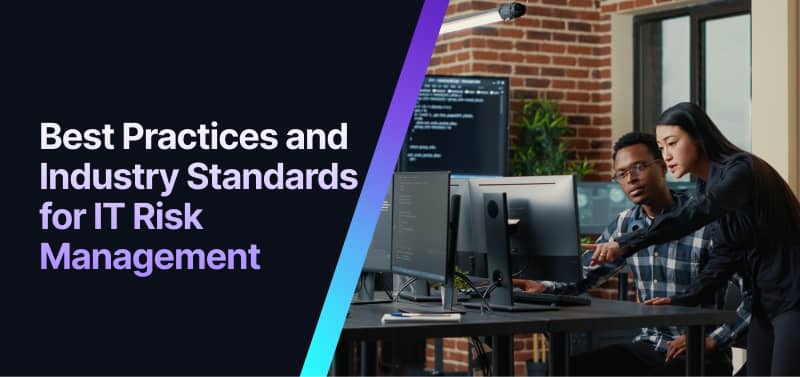
- Understanding the Risk: Do you know the threats your organization might face? Be aware of both inside and outside dangers. Regularly assess vulnerabilities to stay on top of risks.
- Documenting Everything: How do we ensure our documentation stays up-to-date? Keeping detailed records of IT assets, configurations, and interdependencies facilitates the identification of vulnerabilities and weaknesses.
- Fostering a Risk-Aware Culture: How can we encourage our team to be more vigilant? Cultivating a culture where employees are vigilant and educated about potential risks promotes proactive risk management.
- Regular Evaluation and Monitoring: Why should we conduct assessments? Conducting frequent risk assessments and monitoring networks for unusual activity enables timely identification and mitigation of emerging risks.
- Implementing Strong Access-Control Measures: How can we prevent unauthorized access to your systems? Restricting access to sensitive information to authorized personnel using strong authentication methods enhances data security.
- Creating a Culture of Compliance: How can we better communicate compliance policies? Ensuring employees understand and adhere to IT policies and procedures is crucial for maintaining regulatory compliance and minimizing risks.
- Effectively Reporting Risks: How can we improve our incident reporting process? Establishing a streamlined system for reporting IT risks and incidents ensures timely response and mitigation efforts.
Additionally, it's essential to formulate a vigorous risk management strategy by leveraging automated tools for risk identification and assessment. Easy2Patch is your cyber shield! It integrates automated third-party patching into your IT infrastructure.
Importance of Compliance with Industry Standards and Regulations
Compliance with regulations enhances a business's reputation and fosters trust with customers. However, it's recommended to consult legal experts or compliance officers to understand specific requirements for your organization. Important rules like GDPR, HIPAA, or PCI-DSS set strict requirements for protecting and securing data:
- GDPR (General Data Protection Regulation): Protecting the privacy and personal data of EU citizens is mandatory under GDPR, with non-compliance attracting severe fines.
- HIPAA (Health Insurance Portability and Accountability Act): Companies dealing with protected health information (PHI) must adhere to HIPAA standards to safeguard sensitive patient data in the US.
- PCI-DSS (Payment Card Industry Data Security Standard): Ensuring a secure environment for credit card information is imperative under PCI-DSS, with non-compliance resulting in fines and penalties.
Conclusion
As Easy2Patch experts, we offered guidance to protect your organization's sensitive data through IT risk management in this post. This involves identifying risks like software bugs, hardware malfunctions, and cybersecurity threats. Techniques like root cause analysis help identify risks, while frameworks like NIST RMF prioritize them. Mitigation strategies include security controls and staff training. Additionally, Regular audits maintain compliance with industry standards like GDPR and HIPAA. Best practices and using automated tools can protect your organization against IT threats and maintain trust with stakeholders. But are your systems updated against the latest threats?
Easy2Patch is your ally in navigating your IT risk management. Here is why:
- It takes the manual labor out of updating third-party applications. It also integrates with Microsoft ConfigMgr, Intune, and WSUS, automatically fetching and applying the latest patches.
- With Easy2Patch, you can manage updates for all your third-party products from a centralized hub. No more hunting around different systems; it's all right there at your fingertips.
- Easy2Patch helps you stay on top of patch management standards and regulations, so you can rest easy knowing you're meeting all the requirements.
- Have you got devices scattered across the globe? No problem. Easy2Patch can distribute and patch software updates to wherever they're needed, no matter the distance.
And the best part? You don't need to clutter up your devices with extra software agents! Easy2Patch does its job securely and agentless, leaving your systems clean and streamlined.
Frequently Asked Questions
Inadequate planning and communication lead to missed threats, while shifting requirements strain resources and inflate costs. Outdated policies create vulnerabilities, and technical debt adds complexity, increasing IT risks.
For instance, in 2013, Target suffered a data breach due to outdated policies. It resulted in the compromise of 40 million credit card numbers and 70 million addresses, phone numbers, and other personal information.
Overloaded security teams struggle to keep up, hindering effective risk management. Budget constraints impede crucial investments in infrastructure and security measures. Inefficient resource management exacerbates budget overruns, hampering risk mitigation efforts.
For example, a 2019 Forbes Insights survey revealed that 84% of Chief Information Security Officers (CISOs) believed the risk of cyberattack was high and worsening. More than a third (36%) cited inadequate budgets as significantly impacting their cybersecurity programs, leading to a shift from prevention to detection and response. This demonstrates how budget constraints and overloaded security teams can severely affect IT risk management.
Regulations vary across industries and borders, requiring a strategic approach to compliance. They are also constantly evolving. Organizations must ensure adherence to regulatory requirements, such as GDPR, HIPAA, and PCI-DSS, to mitigate associated risks. Compliance helps avoid legal penalties, builds trust with clients and stakeholders, and enhances the organization's reputation. Regular audits, employee training, and technology investments are crucial for managing compliance effectively. Noncompliance can result in financial penalties, legal challenges, and damage to credibility and customer trust, making a proactive compliance strategy essential
Without proper training, errors and security incidents increase. Many employees lack security awareness training, leaving organizations vulnerable to threats. Educating staff on cybersecurity best practices is essential to mitigate IT risks effectively.
Some of the key focus areas include:
- Design and Development Training
- Implementation Training
- Technical Support Training
- Maintenance and Management Training
- Digital Infrastructures Training
- Digital Security Training
IT certifications can also refine skills and kickstart careers in networking, tech support, security, or database management. Notable certifications include CompTIA A+ for a comprehensive entry-level IT introduction, and Cisco Certified Network Associate (CCNA) for IT networking fundamentals.
Technology drives strategic decision-making and enhances risk mitigation efforts. AI aids in identifying and mitigating risks efficiently. Integrating IT risk management with organizational frameworks and leveraging automation enhances effectiveness, enabling proactive risk management.
Some examples of these technologies and tools are:
- Artificial Intelligence (AI) and Machine Learning (ML)
- Cybersecurity Tools (Firewalls, antivirus software, and intrusion detection systems)
- Risk Management Software
- Data Encryption Tools
- Cloud Services
- IT Governance, Risk, and Compliance (GRC) Tools
- Disaster Recovery and Business Continuity Planning Tools
IT Automation Key Benefits and Best Practices
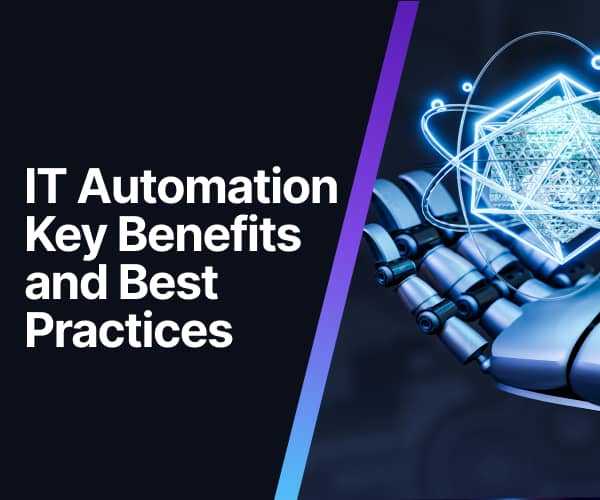
What Is Vulnerability Management?
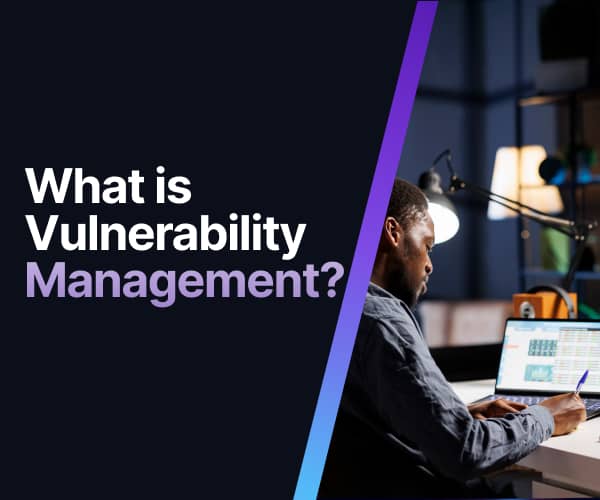
Ultimate IT Risk Management Guide 2024: Best Practices, Strategies, and Tools
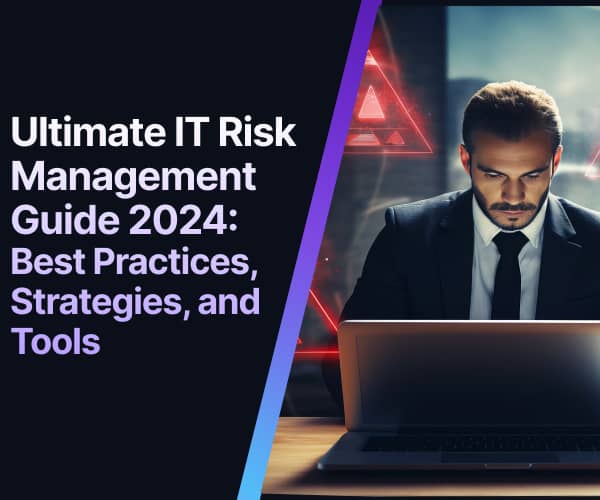
Best Practices for IT Infrastructure Management in 2024
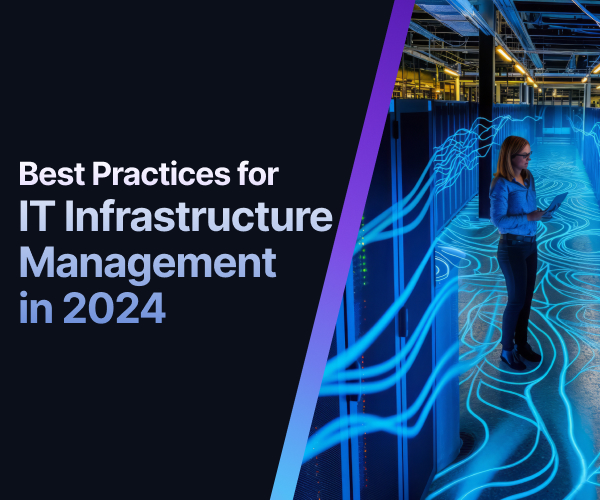
What is Windows Patch Management? Features, Challenges, and Best Practices in 2024
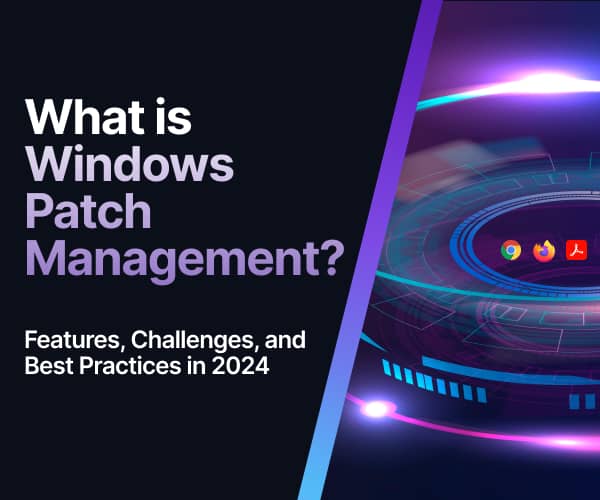
What are the Cybersecurity Risks Associated with Outdated Software and Operating Systems?





